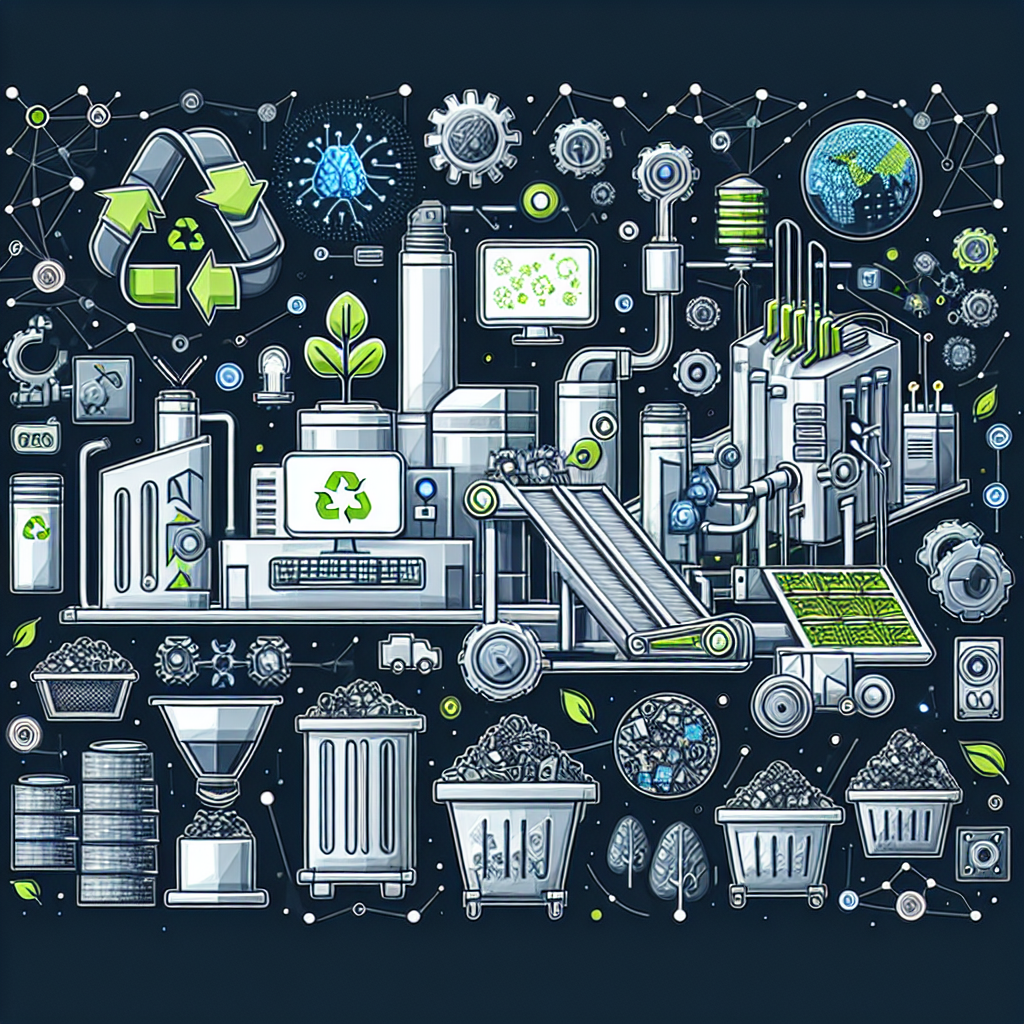In recent years, there has been a growing emphasis on sustainability and environmental responsibility across various industries. One of the key challenges facing many societies today is the proper management and recycling of waste. With the global population on the rise and consumption levels increasing, the amount of waste produced is also growing at an alarming rate. In response to this, there has been a significant push towards developing innovative solutions to tackle the issue of waste recycling.
Artificial intelligence (AI) has emerged as a powerful tool in addressing the challenges of waste recycling. By harnessing the capabilities of AI-driven solutions, businesses and governments can optimize their waste management processes, increase recycling rates, and reduce the environmental impact of waste disposal. In this article, we will explore the various ways in which AI-driven solutions are being used to revolutionize sustainable waste recycling.
AI in Waste Sorting
One of the key areas where AI is making a significant impact in waste recycling is in waste sorting. Traditional waste sorting processes are labor-intensive and often inefficient, leading to high levels of contamination in recycling streams. AI-powered sorting systems, on the other hand, are able to quickly and accurately identify different types of materials and sort them into separate streams.
These systems use advanced sensors, cameras, and machine learning algorithms to analyze and classify waste items based on their shape, color, and composition. By automating the sorting process, AI-driven systems can significantly increase the efficiency of recycling facilities and improve the quality of recycled materials.
For example, robotic arms equipped with AI technology can pick and sort recyclable items from a conveyor belt, separating plastics, metals, paper, and glass with high accuracy and speed. This not only reduces the need for manual labor but also minimizes the risk of contamination and ensures that materials are recycled in the most efficient way possible.
AI in Waste Collection and Transportation
Another area where AI is driving innovation in waste recycling is in waste collection and transportation. Traditional waste collection systems often follow pre-determined routes and schedules, leading to inefficiencies and unnecessary fuel consumption. AI-powered solutions, on the other hand, are able to optimize waste collection routes in real-time based on factors such as traffic conditions, bin fill levels, and collection priorities.
By using data analytics and predictive algorithms, AI-driven systems can identify the most efficient routes for waste collection trucks, minimize fuel consumption, and reduce carbon emissions. This not only helps to improve the overall efficiency of waste collection services but also contributes to reducing the environmental impact of waste transportation.
AI in Waste Recycling Facilities
AI is also being used to enhance the operations of waste recycling facilities. By integrating AI technology into recycling processes, facilities can improve the quality of recycled materials, increase throughput, and reduce operating costs. AI-driven systems can monitor and optimize key processes such as shredding, sorting, and washing to ensure that materials are recycled in the most efficient and environmentally friendly way.
For example, AI-powered sensors can monitor the quality of recycled materials in real-time, detecting contaminants and impurities that may affect the recycling process. By alerting operators to potential issues, these systems can help to maintain the quality of recycled materials and reduce the amount of waste that is rejected or sent to landfill.
FAQs:
Q: How does AI improve waste sorting processes?
A: AI-powered sorting systems use advanced sensors, cameras, and machine learning algorithms to analyze and classify waste items based on their shape, color, and composition. By automating the sorting process, AI-driven systems can significantly increase the efficiency of recycling facilities and improve the quality of recycled materials.
Q: How can AI optimize waste collection routes?
A: AI-powered solutions use data analytics and predictive algorithms to identify the most efficient routes for waste collection trucks in real-time. By considering factors such as traffic conditions, bin fill levels, and collection priorities, AI-driven systems can minimize fuel consumption, reduce carbon emissions, and improve the overall efficiency of waste collection services.
Q: What are the benefits of using AI in waste recycling facilities?
A: By integrating AI technology into recycling processes, facilities can improve the quality of recycled materials, increase throughput, and reduce operating costs. AI-driven systems can monitor and optimize key processes such as shredding, sorting, and washing to ensure that materials are recycled in the most efficient and environmentally friendly way.

